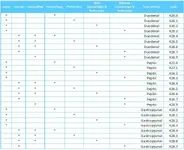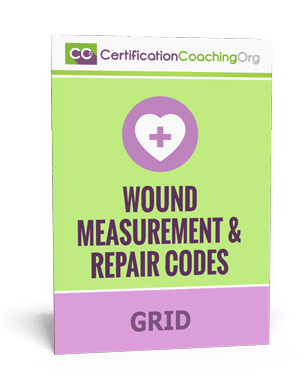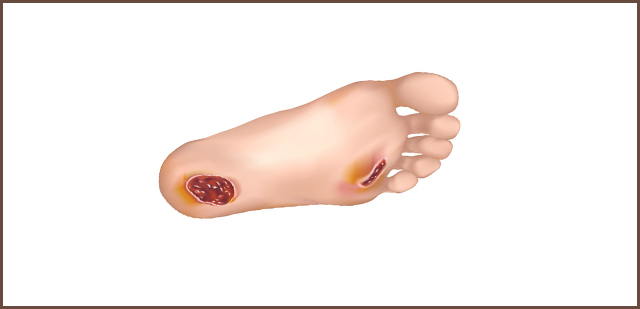Billing and Coding: Wound and Ulcer Care
WOUND OR ULCER?
There have been disagreements, debates, and articles written on the difference between what’s considered to be a “wound” versus an “ulcer.” Sometimes, ICD-10 is almost like its own language, and this is one of those situations. Be aware that in ICD-10 language, a wound is something that occurs traumatically. All wound codes start with the letter “S,” placing them in Chapter 19 of the tabular index “Injury, Poisoning and Certain Other Consequences of External Causes (S00-T88).” The term “ulcer” refers to a break in the skin that fails to heal as it should and is typically more chronic in nature. While many clinicians may interchange the terms “ulcer” and “wound” as if they are synonyms, they are not synonyms when it comes to ICD-10 coding.
How To Code For Ulcers According To ICD-10 Guidelines
Gastric ulcer (K25)
Duodenal ulcer (K26)
Peptic ulcer (K27)
Gastrojejunal ulcer (K28)
Each type of ulcer is further classified into acute or chronic. If the nature of ulcer cannot be determined, an “unspecified” code may be used.

Documentation guidelines for CPT® codes 11042—11047,
When multiple wounds have the same depth, add together total square centimeters and report one code. For multiple wounds of different depths, report the deepest first and report additional debridement codes with modifier 59.
The coding of pressure ulcers has seen many changes over the past several years. Coders have seen that ICD-10-CM also came with changes on reporting of these ulcers.
With ICD-10-CM, the code for reporting pressure ulcers now identifies the site and the stage of the ulcer.
Pressure ulcer stages are based on the severity of the ulcer:
6th Characters
Each of the code stems listed above require a 6th character to complete the code. These 6th character options are:
0 – Unstageable
1 – Stage 1
2 – Stage 2
3 – Stage 3
4 – Stage 4
6 – Pressure-induced deep tissue damage
9 – Unspecified stage
The L89- 6th character options of “0,1,2,3, and 4” all represent a pressure ulcer, whereas the L89- 6th character option of “6” represents pressure-induced deep tissue damage
Stages 1-4
Deep tissue pressure injury
Unspecified stage and
Unstageable
If a patient has more than one pressure ulcer a code for each should be reported.
Stage 1: Skin changes limited to persistent focal edema
Stage 2: An abrasion, blister, and partial thickness skin loss involving the dermis and epidermis
Stage 3: Full thickness skin loss involving damage and necrosis of subcutaneous tissue
Stage 4: Necrosis of soft tissues through the underlying muscle, tendon, or bone
Unstageable pressure ulcers are diagnosed when the physician or clinician is not able to stage due to the ulcer being covered by eschar or possibly even a skin graft. If a patient with an unstageable pressure ulcer has a debridement and the stage of the ulcer is then revealed and documented, only code the stage revealed and not unstageable.
Unspecified pressure ulcers are reported with there is a lack of documentation regarding the pressure ulcer stage
Unstageable: Based on clinical documentation the stage cannot be determined clinically (e.g., the wound is covered with eschar) or for ulcers documented as deep tissue injury without evidence of trauma.
An instructional note in ICD-10 states to code also any associated gangrene (I96).
Non-pressure chronic ulcers are similar to pressure ulcers in that they require documentation of the site, severity, and laterality. Category L97 and L98 are for Non-pressure ulcers, and have an instructional note to code first any associated underlying condition, such as:
Healed pressure ulcers are not coded.
Healing pressure ulcers are coded to the site and stage documented by the physician/clinician. If no stage is documented for the healing pressure ulcer, unspecified stage should be reported.
If a pressure ulcer is present on admission but healed at the time of discharge, only the site and stage of the pressure ulcer at the time of admission is reported.
One code for the site and stage of the pressure ulcer on admission.
One code for the same site of the pressure ulcer with the highest stage reported during the stay.
Pressure Ulcer Definition and Risk Factors
The NPUAP defines a pressure injury as “localized damage to the skin and/or underlying soft tissue usually over a bony prominence or related to a medical or other device”. The injury can present as intact skin or an open ulcer and may be painful. It develops as a result of extreme and/or prolonged pressure or pressure in combination with shear.
Risk factors for pressure ulcers include advanced age, immobility, incontinence, inadequate nutrition and hydration, neuro-sensory deficiency, device-related skin pressure, multiple comorbidities and circulatory abnormalities.
Pressure Ulcer Documentation and Coding – Key Considerations
Knowing ICD-10 instructions on coding pressure ulcers such as:
Assigning as many codes from category L89 as needed to identify all the pressure ulcers the patient has, if applicable
Also coding any associated gangrene (I96)
The documentation should specify if the ulcer is a pressure ulcer or a non-pressure ulcer and also the stage of the ulcer as defined by the National Pressure Ulcer Advisory Panel (NPUAP)
The concept of laterality (such as, left or right) should be included in the clinical documentation
Present on admission codes for pressure ulcers should be accurately assigned, including ulcers that progress during an inpatient stay
Category L89 in ICD-10
Pressure ulcer/injury codes are located in the ICD-10 code category L89. There are more than 160 combination codes in the ICD-10 category L89 which identify the site, stage, and generally, the laterality of the ulcer. ICD-10 code category L89.4- is used to report pressure ulcers that span multiple body parts, (contiguous site of back, buttock, and hip).
ICD-10 uses the five stages of pressure ulcers defined by the NPUAP:
Stage 1, non-blanchable erythema
Stage 2, partial-thickness
Stage 3, full-thickness skin loss
Stage 4, full-thickness tissue loss
Unstageable: In addition to these 4 stages, a pressure ulcer may be unstageable due to the following:
The ulcer cannot be examined at a particular time – i.e., it’s under a dressing or not debrided
The injury is covered by an eschar or blister
The ulceris in evolution and the final extent of injury is unclear until the dead tissue demarcates from adjacent viable tissue
Deep Tissue Injury: The NPUAP defines another stage based on findings that suggest damage to underlying tissue – deep tissue injury. Signs include intact or non-intact skin with localized area of persistent non-blanchable deep red, maroon, purple discoloration or epidermal separation revealing a dark wound bed or blood filled blister. Pain and temperature change often precede skin color changes. This injury results from intense and/or prolonged pressure and shear forces at the bone-muscle interface. In a rapidly developing pressure ulcer, subcutaneous tissue can become necrotic before the epidermis erodes. Thus, a small ulcer may in fact represent extensive subcutaneous necrosis and damage.
Code also:
Associated gangrene
Atherosclerosis of the lower extremities
Chronic venous hypertension
Diabetic ulcers
Postphlebetic syndrome
Postthrombotic syndrome
Varicose ulcers
The severity of the ulcers is described as:
Limited to breakdown of skin
With fat layer exposed
With necrosis of muscle
With necrosis of bone
Wound Care Measurement & Repair Grid

This free Wound Measurement & Repair Grid serves as the perfect ‘cheatsheet’ for medical coders.
If you’re trying to figure out the correct medical codes for wound repair, then this grid will help out immensely.
Wound Measurement and Repair: Click Here to Download
Article - Billing and Coding: Wound and Ulcer Care (A58567)
Use this page to view details for the Local Coverage Article for billing and coding: wound and ulcer care.

Reporting Pressure Ulcers
The coding of pressure ulcers has seen many changes over the past several years. Coders have seen that ICD-10-CM also came with changes on reporting of these ulcers.
How To Code For Ulcers According To ICD-10 Guidelines - NextServices

Coding Pressure Ulcers - Quality Documentation is Critical
Quality documentation and accurate ICD-10 code assignment is critical to report pressure ulcers for maximum reimbursement.
 www.outsourcestrategies.com
www.outsourcestrategies.com

Pressure Ulcer and Non-Pressure Ulcer ICD-10 Coding
Pressure ulcer diagnostic codes (category L89) are combination codes that identify the site, stage, and (in most cases) the laterality of the ulcer.


